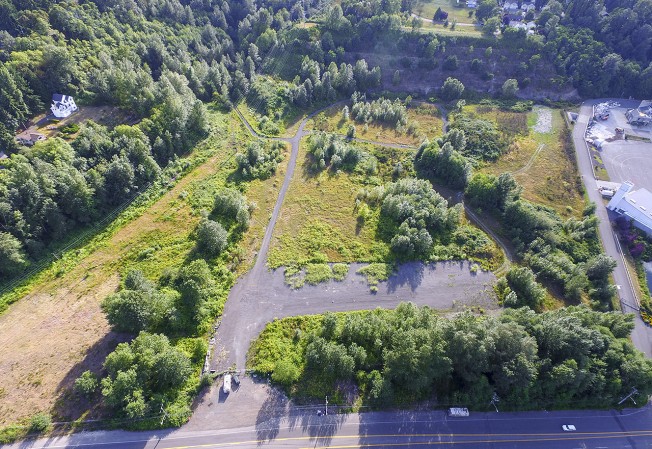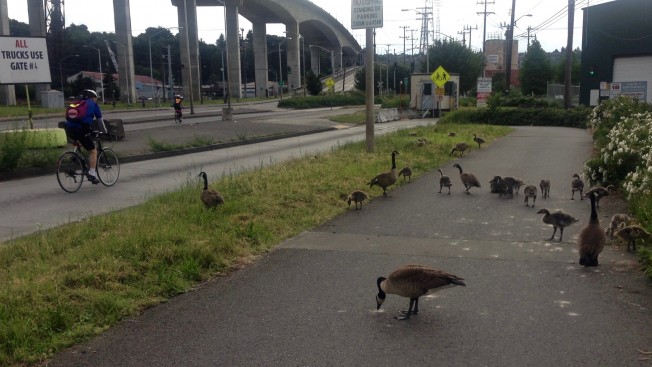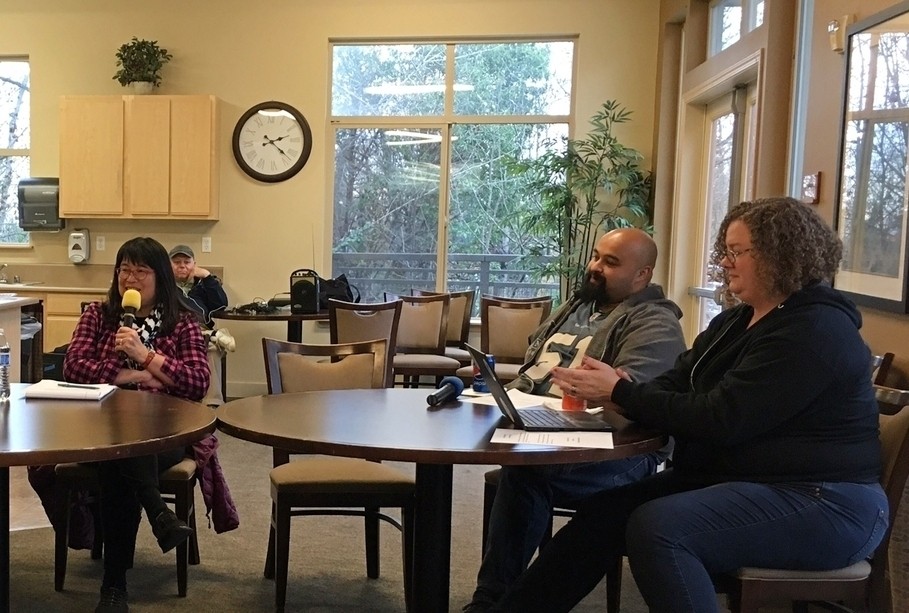(UPDATED 6:30 PM with comment from City Councilmember Lisa Herbold)

(Photo by Cory Bagley – aerial view of western Myers Way Parcels land, from this past July)
4:44 PM: A month and a half ago, during the uproar about whether camping would be allowed in city parks, Mayor Murray promised to announce four new authorized encampment sites. Since then, city staff has been reviewing locations, and has just announced three sites – including one in southeast West Seattle, part of the city-owned Myers Way Parcels. Here’s the announcement just in:
Today, the Human Services Department announced the siting of three new temporary sanctioned encampments for individuals living unsheltered in Seattle. This action is part of the Bridging the Gap plan, announced in October, to better address the immediate needs of people experiencing homelessness while the City fully implements its long-term plan, Pathways Home.
Together, the following three new sanctioned encampments will serve more than 200 people starting in early 2017:
1. 1000 S Myrtle Street will contain up to 50 tiny houses serving 60-70 people.
2. 8620 Nesbit Ave N. will contain up to 50 tiny houses serving 60-70 people.
3. 9701 Myers Way S will contain up to 50 tents serving 60-70 people.
“Today’s announcement recognizes our need to provide safer alternatives to the people living unsheltered on our streets as we work to implement Pathways Home,” said Catherine Lester, Director of the Human Services Department. “We remain committed to our long-term plan to transform our homeless services system and focus our investments on getting people off the streets and into housing. In the meantime, we will continue the work of increasing our outreach efforts, implementing a more compassionate set of protocols when cleanups are necessary and offering trash and needle pickup services.”
In October, Mayor Murray announced the Bridging the Gap plan, which recognizes that the City should not displace unauthorized encampments that do not pose an imminent health or safety risk or do not unlawfully obstruct a public use, unless the City can offer those living there a safer alternative place to live. The plan reflects the principles laid out by the Task Force on Unsheltered Cleanup Protocols.
That announcement came a month after Mayor Murray announced Pathways Home, Seattle’s plan to transform our homeless services system by focusing our investments on the goal of getting people into stable housing. The plan aims to eliminate barriers to better meet the individualized needs of those experiencing homelessness, shift investments where necessary to achieve the goal of moving people into housing, and increase accountability to this goal through performance-based contracting.
The first of the authorized encampments is scheduled to open in early January.
Additional information about the Mayor’s actions to address homelessness can be found here.
There’s already an unauthorized encampment – Camp Second Chance – on part of the Myers Way Parcels (it was slated for eviction four months ago but that was shelved indefinitely). We have asked the Human Services Department to clarify if that camp is included in this plan or not. (ADDED: Spokesperson Chelsea Kellogg says this is the same site CSC is on.)
BACKSTORY: At one point, the mayor planned to sell part of the Myers Way Parcels to raise money for homelessness-related programs. Then he announced in mid-July that most of it would be kept for open-space purposes, except for a section to be used to expand the Joint Training Facility that borders it to the north.
Related to that – and immediately preceding this announcement – local advocates had learned that the site had yet to be transferred to the Parks Department, as the mayor had indicated it would be, and instead remains in the portfolio of the Department of Finance and Administrative Services, which remains accountable for its maintenance. Councilmember Lisa Herbold subsequently learned of this and asked Parks Superintendent Jesús Aguirre about it. His reply to her: “Although the property has been committed to and designated to be transferred to SPR’s inventory, the official transfer has not yet happened. Finally, since we do not have the funds to maintain the property, FAS has agreed to continue doing so. We will update our maps listing the land-banked sites to include the Myers Way site moving forward, with the caveat that there is not yet funding available for the development of the site.” (“Land-banked” refers to sites Parks owns – such as the Morgan Junction Park expansion site and the Charlestown and 40th SW sites in West Seattle – but has not yet developed with park facilities.) How, or whether, this relates to the encampment announcement is not yet clear.
The Myers Way Parcels have had other proposed uses in the past, including, in the late 2000s, consideration as a possible site for a new city jail that ultimately wasn’t built.
ADDED 6:30 PM: From Councilmember Herbold:
Because I know Highland Park residents have expressed concerns about equity with the rest of District, I asked what criteria HSD used to select the approximately 50 sites throughout Seattle that were deemed eligible for consideration. Here is what I was told:
Urgency: The primary review focused on city-owned parcels that could be activated quickly based on site conditions and current use of the property.
Geographic distribution: They primarily focused on parcels located in different areas of the city from the 3 existing authorized encampments.
Authorized Encampment Ordinance: They prioritized sites based on how they met the requirements of the authorized encampment ordinance, including location in non-residential zones, availability of transit, minimum lot size of 5000 sf, adjacent uses, etc.
Underlying Financing: As a budgetary consideration, they evaluated the underlying ownership/financing of sites to determine the amount of required compensation for the use of the site (e.g. utility ownership or gas tax financing).
Given these criteria, they evaluated about 50 possible sites for the new authorized encampments and of those sites, 5 were located in West Seattle. I’ve asked what the other 3 sites were. One of those was the old Nickelsville site. Specifically, I’d like to be able to explain to the community what made the other two sites in West Seattle less desirable.
The Mayor’s Office has told me that they will pledge to work closely with the surrounding communities to make the Myers Way site a good home for encampment occupants and a good neighbor to the surrounding communities.
We have additional followup questions we’ll be pursuing with the city tomorrow.













 First followup: The
First followup: The 











| 3 COMMENTS